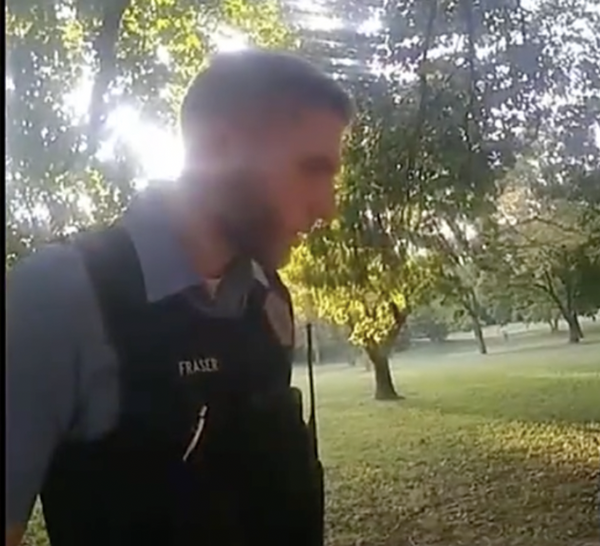
In her debut book Mountain Tales, Love and Loss in the Municipality of Castaway Belongings, author Saumya Roy follows the lives of a few ragpickers, including Farzana Sheikh in Deonar, a rubbish dump in Mumbai and one of the largest in the country. Al Jazeera South Asia Business Editor Megha Bahree discusses with her the book as well as how Indians consume things today and the impact of that on waste disposal and the lives of the people dealing with that. Edited excerpts.
Al Jazeera: Tell us about Farzana Sheikh. This story is about trash in Mumbai, but it is mostly about Farzana, right?
Saumya Roy: Yeah, that’s right. I have known Farzana since she was about 14 years old – gangly, full of energy, not very vocal. Her father was a waste-picker on the garbage mountains. She was born right in the lane that ended at the feet of the garbage mountains. She began her life by learning to find toys, clothes, food in the waste. Her life intertwined with it. And that is why this book is her personal story of tremendous gumption, but also one that tells us something about our lives today. Because she lives at the feet of the largest garbage mountains in our city, one that is among the largest in the world.
Al Jazeera: What got you fascinated with all of this?
Roy: I was a journalist for many years. Then I ran a nonprofit where we gave microloans to micro-entrepreneurs across Mumbai city and in rural Maharashtra, and so I would see lots of communities. But with this one, I was fascinated immediately when they told me what they do. And I began going to their houses, and the houses were made of trash that they had brought back, like plastic sheets, cloth, they were wearing it, they were finding food, they were eating it. I began walking with them to the garbage mountains and that’s when I realised that it was this interplay of what is our life today. The impact of everything that we consume is creating these lives, but it’s also creating pollution, illness, greenhouse gases. So this provided a human dimension to saying something much larger about how we live and what impact it has.
Al Jazeera: So when your book begins, is it the 1890s? And was waste disposal in Mumbai very different from today?
Roy: There was a plague in the city at the time, and people were dying, and there were similar quarantine measures [as during COVID-19]. There were military personnel going out to check if they were plague buboes on ill people in the city and those patients were forcibly taken to hospital. And so there was a lot of unrest against the colonial British administration and there were a lot of riots and violence in the city, and so the British administration decided the best way to deal with this was to reduce trash. They bought this huge 823-acre space at the edge of the city where all the trash was to be deposited – out of sight, out of mind. They thought that with it the plague and riots and violence would go away. But in fact, 100 or so years later, when officials looked back, there were already mountains of garbage that were rising up 120 feet, rising up to 20-storey buildings even then.
Al Jazeera: What was the trash like at that time?
Roy: In the 1890s, there was glass, some degree of metal, but mostly food scraps of fruit peels, leftover food, cloth scraps.
Al Jazeera: What is the garbage from Indian homes today? How have consumption patterns changed?
Roy: In the early 1990s is when economic reform begins and with that the arrival of multinational companies that this whole consumption boom takes off. I have vivid memories of when Pepsi, McDonald’s, Pizza Hut came and how patterns of consumption or the scale of consumption suddenly changed. Since then the scale and nature of trash have gone up. We see more plastic bottles, foil boxes for food, and the new addition now is styrofoam cups for coffee.
To me, something that Farzana said was the greatest example of how our consumption has changed. She would always tell me, you know, the apples we found in the dumping grounds, they were not Indian apples because those are so small. And I think she meant like Chinese and American apples as they are huge.

Al Jazeera: How has that changed the economic life for the waste pickers?
Roy: I always heard of somebody who had become very wealthy on waste. I never met those waste pickers. I have a feeling they don’t exist. And that’s because the lives of the poor are so fragile. So if they were to make some money very quickly, there would be some kind of family emergency, somebody’s dying, weddings, some kind of health emergency, that then pulls them back into this work, into this life
Al Jazeera: What role do Farzana and other waste pickers have with the dawn of big companies investing in garbage systems that use large incinerators? Can the latter replace pickers, and should it?
Roy: Historically, the mindset of officials was that waste should be evacuated from the city. It should leave the wealthy parts of the city. And the only thing that left the covered mountains was what the waste pickers took away with their bare hands. So if there was anything that was resold, it was recycled by them.
There are studies to show that a third of waste is reduced by the efforts of waste pickers. So they have played a very important role and going ahead they have a role to play because of their skill. They know this work, and not everything goes into incinerators.
Al Jazeera: What sort of garbage does India import, and from where and why?
Roy: India imports waste from the US, UK and Europe. For many years, China was the receptacle of waste for the whole world. And they would recycle it and use it in different ways. This was the original circular economy until they realised that it was causing pollution which led to a rethink, and they banned imports of waste. But it moved with Chinese traders to Thailand, Malaysia, Cambodia, etc. When those countries began banning it, European waste began moving to Turkey. And now Turkey has banned waste. And so, we have seen over the years that waste imports have increased in India. India has also said that if this does not get regulated, we may ban imports of certain kinds of plastic and paper. It’s just moving from country to country as regulations change.
Al Jazeera: Has the pandemic affected waste disposal patterns and pickers? How?
Roy: Yeah, it has. Because lockdowns in India were tough, they found it hard to work. And also, there was some COVID-related waste coming to the dumping grounds. When they were desperate to work, they were working through this waste, whether it was food trays, bottles, not necessarily medical or infected stuff. They were wearing used PPE kits to guard against the rain. During the pandemic, our consumption also went up. We’re not going to restaurants as we once did. But instead, we’re ordering food, which comes in these packaged boxes, we are buying things online, all of which is creating increased trash.
Al Jazeera: Was there enough work for them during the pandemic, especially with the lockdowns? Did they get sick as well?
Roy: None of them had COVID, or at least that they know of. But their desperation was to continue to work. I remember one of them telling me that if not this disease, then hunger would kill them.

Al Jazeera: In the beginning, it was hard for me to get through a few pages of the book, just imagining the smell of all the things. But when you speak about the pickers and how they look at this mountain, as income, as uncovering potentially buried treasure, it took me a chapter or two, but I started to think of it that way as well. Is that something you did consciously?
Roy: I thought of it as this sort of interplay of life and death as it were. And that is how this place presented itself to me in a way. It is a dumping ground and people think of it as a place of blight. But when you talk to waste pickers, they tell you, it’s a place of opportunity. A place where you’re just one handful away from finding a treasure, where you could nearly get rich on something somebody forgot. I first got to know about the garbage dump from the waste pickers, and they never told me this was a horrible place to work. They thought it was great. They had wonderful memories of birthday parties, romances, summer treats and that was the interplay that had to be shown. It would be incorrect to fetishise it and say this was a wonderful place, because it was not.
Al Jazeera: What, if anything, is being done to lift pickers out of poverty and move the country towards a more sustainable, humane and equitable waste disposable culture?
Roy: The Indian government has announced a large, about $13bn, plan to remediate for various air pollution-related measures, one of which includes the remediation on what the prime minister called moving the mountains of garbage. They did say that it would create opportunities for people who lived off the garbage mountains, but it’s not clear yet what those opportunities are for waste pickers. I think policymakers look at it from two perspectives. One is how quickly can we get the waste out? And secondly, from the slight technical perspective of how quickly can we incinerate, turn it to ash, reduce it to zero. But what is the impact on air, on water pollution? What is the impact on the quality and length of the life of waste pickers, on people who live around these garbage mountains? There’s no point having, say, a biomedical waste incinerator if that is affecting the health of people who live around. That is also a measure by which waste management needs to be evaluated.
Al Jazeera: What do the waste pickers want?
Roy: They don’t know any life other than this. I followed them for eight or nine years. And the only people who left the garbage mountains were one or two characters who passed away, and one of whom is in jail. The others are continuing to work. It is hard to leave. They’re also not equipped, don’t have a great education, to take on those jobs in shining India. One picker tried to take a job as a cab driver with ride-hailing company Ola. But he could not follow directions on the screen and was rejected. So many of them have made attempts to leave and take jobs in the gig economy, but have not been able to hold on to those jobs. Waste pickers live very insecure, difficult, unhealthy lives. And so it’s important to create opportunities for them, to make them capable of taking those opportunities.







